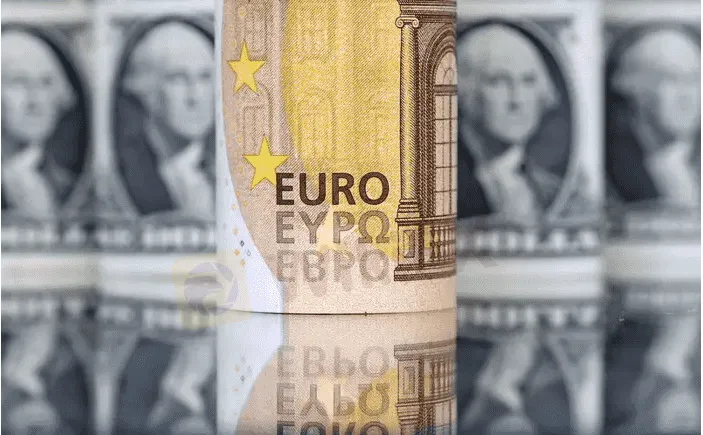简体中文
繁體中文
English
Pусский
日本語
ภาษาไทย
Tiếng Việt
Bahasa Indonesia
Español
हिन्दी
Filippiiniläinen
Français
Deutsch
Português
Türkçe
한국어
العربية
Euro fragile as Fed hike looms, gas risks weigh
Abstract:The euro nursed losses on Wednesday after its sharpest drop in two weeks, as a cut in Russian gas supply sent energy prices soaring, while the dollar held ground ahead of an expected U.S. interest rate hike later in the day.

The euro fell about 1% to $1.0108 overnight, the largest fall since July 11 and was steady in early Asia trade at $1.0139. Europes growth remains vulnerable to Russian gas supplies, which have become a major risk since the start of the Ukraine war.
Flows along the Nord Stream pipe from Russia to Germany fell on Tuesday and will drop further on Wednesday.
“Energy supply is likely to remain a key issue for the European economy over the coming months,” said Kristina Clifton, a currency strategist at Commonwealth Bank of Australia. “The euro can trade below parity, more than just briefly (and) sooner rather than later.”
Elsewhere moves have been restrained ahead of the Federal Reserves policy announcement due at 1800 GMT. The yen was steady at 136.98 per dollar. The Australian and New Zealand dollars edged marginally higher in early trade, but were kept below Tuesday highs. Sterling hovered at $1.2048.
Analysts said the Australian dollar could rise if inflation data due at 0130 GMT surprises on the upside. Headline inflation is expected to hit a three-decade high of 6.2%. The Aussie was last up 0.2% at $0.6950 and the kiwi rose 0.2% to $0.6243.
Markets have priced in a 75 basis point Fed hike later on Wednesday, with a 13% chance of a supersized 100 bp raise.
Focus will also be on the news conference at 1830 GMT for any hint that policymakers resolve to hike further is waning as growth slows.
“Its more of a wait-and-see rather than the expectation of a large surprise,” said Galvin Chia, emerging markets strategist at NatWest Markets.
He expects the U.S. dollar to remain supported by safe haven flows over the longer term, amid a darkening global outlook.
Overnight data showed U.S. consumer confidence falling to a nearly 1-1/2 year low and new home sales slumping, while Walmart shares slid after the retailer issued a profit warning.
Last week European manufacturing data was soft.
“Downside risks to the eurozone growth and broader growth concerns globally tends to suggest more dollar strength,” Chia said.
The U.S. dollar index stood at 107.08, not far below mid-Julys 20-year high of 109.290. It gained 0.64% overnight, snapping three straight sessions of declines.

Disclaimer:
The views in this article only represent the author's personal views, and do not constitute investment advice on this platform. This platform does not guarantee the accuracy, completeness and timeliness of the information in the article, and will not be liable for any loss caused by the use of or reliance on the information in the article.
Read more

BlackBull: A Closer Look at Its Licenses
When selecting a broker, understanding its regulatory standing is an important part of assessing overall reliability. For traders seeking to protect their capital, ensuring that a platform operates under recognised and stringent oversight can make all the difference. Keep reading to learn more about BlackBull and its licenses.

Dark Side of AETOS: They Don’t Want You to Know
AETOS is an Australia-based broker. All over the internet, you will find positive reviews about this broker, but no one is talking about the risks involved with AETOS. However, we have exposed the hidden risks associated with AETOS

Contemplating Investments in Quotex? Abandon Your Plan Before You Lose All Your Funds
Have you received calls from Quotex executives claiming to offer you returns of over 50% per month? Do you face both deposit and withdrawal issues at this company? Or have you faced a complete scam trading with this forex broker? You're not alone. Here is the exposure story.

15 Brokers FCA Says "Are Operating Illegally" Beware!
If a reputable regulator issues a warning about unlicensed brokers, it's important to take it seriously — whether you're a trader or an investor. Here is a list you can check out- be cautious and avoid getting involved with these scam brokers.
WikiFX Broker
Latest News
Scam Alert: Revealing Top Four Forex Scam Tactics Employed to Dupe Investors
Meta says it won't sign Europe AI agreement, calling it an overreach that will stunt growth
Ether and trading stocks take the crypto spotlight as Congress passes historic stablecoin bill
Inflation outlook tumbles to pre-tariff levels in latest University of Michigan survey
Peter Thiel-backed cryptocurrency exchange Bullish files to go public on NYSE
What a Trump, Powell faceoff means for your money
Ether takes crypto spotlight as Congress passes historic stablecoin bill
Exness Halts New India Accounts Amid Regulatory Change
eToro and BridgeWise Launch AI Smart Portfolio for US Mid-Cap Stocks
Forex.com vs OANDA: A No-Nonsense Comparison That Actually Helps You Decide
Currency Calculator


